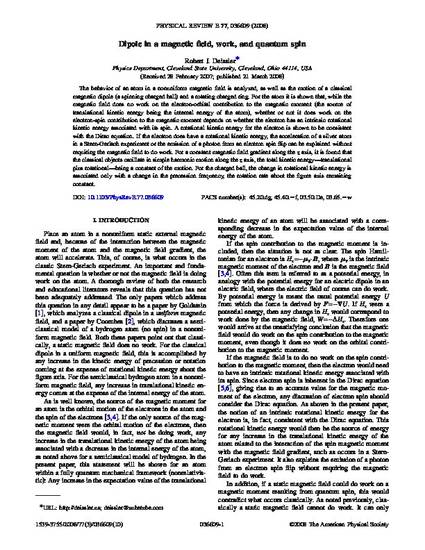
The behavior of an atom in a nonuniform magnetic field is analyzed, as well as the motion of a classical magnetic dipole (a spinning charged ball) and a rotating charged ring. For the atom it is shown that, while the magnetic field does no work on the electron-orbital contribution to the magnetic moment (the source of translational kinetic energy being the internal energy of the atom), whether or not it does work on the electron- spin contribution to the magnetic moment depends on whether the electron has an intrinsic rotational kinetic energy associated with its spin. A rotational kinetic energy for the electron is shown to be consistent with the Dirac equation. If the electron does have a rotational kinetic energy, the acceleration of a silver atom in a Stern-Gerlach experiment or the emission of a photon from an electron spin flip can be explained without requiring the magnetic field to do work. For a constant magnetic field gradient along the z axis, it is found that the classical objects oscillate in simple harmonic motion along the z axis, the total kinetic energy-translational plus rotational-being a constant of the motion. For the charged ball, the change in rotational kinetic energy is associated only with a change in the precession frequency, the rotation rate about the figure axis remaining constant.
